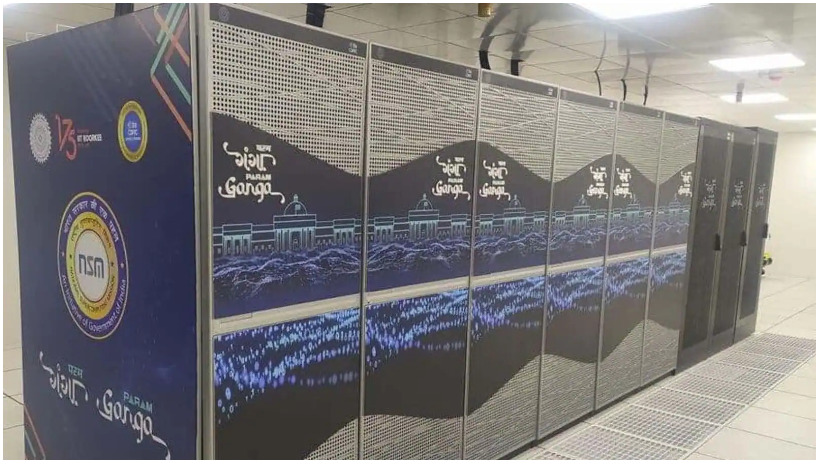National Supercomputing Mission (NSM)
Research Team
- Resource center
- Published:
- Resource center
- Published:
What is the National Supercomputing mission?
India’s National Supercomputing Mission (NSM) is a pioneering initiative aimed at catapulting the nation into the forefront of high-performance computing (HPC) capabilities. Launched in 2015, this ambitious project spans three phases, each with its own set of targets in terms of computational power measured in petaflops and teraflops. In this blog, we will delve into the timeline and targets of each phase, shedding light on how the NSM is transforming India’s research, innovation, and competitiveness on a global scale.
National Supercomputing Mission (NSM) has been set up to provide the country with supercomputing infrastructure to meet the increasing computational demands of academia, researchers, MSMEs, and startups. It is a first of its kind attempt to boost the country’s computing power. National SuperComputing Mission is steered jointly by the Department of Science and Technology (DST) and Ministry of Electronics and IT (MeitY) and implemented by the Centre for Development of Advanced Computing (C-DAC), Pune and the Indian Institute of Science (IISc), Bengaluru.

What are the different phases of the National Supercomputing Mission?
Phase I: Establishing the Foundation
The first phase of the NSM, which began in 2015 and concluded in 2017, focused on setting up the foundational infrastructure for supercomputing in India. This phase aimed at deploying a cluster of supercomputers across the nation with a total computing power of 2.8 petaflops.
Timeline:
- Launch: 2015
- Completion: 2017
Targets:
- Deployment of supercomputers with a total combined capacity of 2.8 petaflops.
- Establishment of supercomputing centers in various academic and research institutions.
- Development of human resources and skills in the field of supercomputing.
The completion of Phase I laid the groundwork for India to advance further into the world of HPC, enabling researchers and scientists to undertake complex simulations, data analysis, and scientific research with greater efficiency.
Phase II: Strengthening the Infrastructure
Building on the success of Phase I, the second phase of the NSM commenced in 2017 with the goal of significantly enhancing India’s supercomputing capabilities. This phase was planned to run until 2020 and aimed to provide a substantial boost in computational power, reaching 10 petaflops.
Timeline:
- Launch: 2017
- Completion: 2020
Targets:
- Deployment of supercomputers with a combined capacity of 10 petaflops.
- Expansion of the supercomputing network to support a wider range of scientific and industrial applications.
- Promotion of indigenous development and research in supercomputing technology.
Phase II marked a significant milestone in India’s journey towards becoming a global supercomputing power. It enabled scientists and researchers to tackle more complex and data-intensive challenges, fostering innovation in various domains.
Phase III: Achieving Global Competitiveness
The third and final phase of the NSM, launched in 2020, aspired to propel India into the league of nations with top-tier supercomputing capabilities. This phase aims to deploy supercomputers with a combined computational power of 20 petaflops and thousands of teraflops, fostering cutting-edge research and innovation.
Timeline:
- Launch: 2020 (Ongoing as of 2023)
Targets:
- Deployment of supercomputers with a total combined capacity of 20 petaflops and thousands of teraflops.
- Facilitation of scientific discoveries in fields like climate modeling, drug discovery, and astrophysics.
- Empowerment of Indian industries through HPC-driven innovation.
- Strengthening of the nation’s cybersecurity capabilities.
As of 2023, Phase III is still ongoing, and its ambitious targets are a testament to India’s commitment to achieving global competitiveness in the field of supercomputing. This phase is poised to revolutionize various sectors, from healthcare and agriculture to defense and weather forecasting, ultimately enhancing the quality of life for all citizens.
What are some of the achievements of the National Supercomputing Mission(NSM)?
As of the latest update, several supercomputers were deployed under India’s National Supercomputing Mission (NSM). Please note that the information may have changed since then, and new supercomputers may have been added. Here are some of the supercomputers that were part of the NSM:
PARAM Shivay: This supercomputer was installed at IIT (BHU) Varanasi in Phase I of the NSM. It had a peak computing power of around 0.8 petaflops. PARAM Shivay was designed to address complex and data-intensive computational tasks, particularly in scientific research and engineering simulations.
Pratyush: Pratyush is one of the most prominent supercomputers under the NSM and is installed at the Indian Institute of Tropical Meteorology (IITM) in Pune. It is a high-performance computing facility dedicated to weather and climate research. Pratyush consists of two supercomputers, Mihir and Meghdoot, with a combined computing power of over 6 petaflops.
SahasraT: SahasraT, located at the National Aerospace Laboratories (NAL) in Bengaluru, is another supercomputer established under the NSM. It is primarily used for aerospace-related research and simulations. SahasraT had a peak performance of around 1.3 petaflops.
Annapurna: Annapurna is located at the Indian Institute of Science (IISc) in Bengaluru. It is dedicated to research in computational biology and bioinformatics. This supercomputer helps scientists analyze biological data and perform simulations related to genomics, proteomics, and drug discovery.
Mihir: Mihir is one of the two supercomputers making up the Pratyush system. It is located at the Indian Institute of Tropical Meteorology (IITM) and is specifically designed for climate modeling and weather forecasting. Mihir has a peak performance of several petaflops.
Param Siddhi AI: Param Siddhi AI, developed by the Centre for Development of Advanced Computing (C-DAC), is designed for artificial intelligence (AI) and machine learning (ML) applications. It is housed at the C-DAC facility in Pune and has a significant computing power, allowing for advanced AI and ML research.
Vikram-I: Vikram-I is a supercomputer deployed at the Indian Institute of Technology (IIT) Kanpur. It is used for various scientific and engineering simulations, including fluid dynamics, structural analysis, and materials science.
Param Brahma: Param Brahma, located at IIT Delhi, is used for research in areas such as computational chemistry, materials science, and fluid dynamics. It has contributed to advancements in drug discovery, materials design, and other scientific endeavors.
Please keep in mind that the NSM is an ongoing initiative, and new supercomputers may have been added or upgraded as the project progresses. For the most up-to-date information on supercomputers deployed under the NSM, I recommend visiting the official website of the National Supercomputing Mission or contacting relevant institutions and research centers involved in the project.
India’s National Supercomputing Mission is a remarkable journey from establishing the foundational infrastructure to striving for global competitiveness in the realm of supercomputing. With each phase, the nation has made significant strides, harnessing the power of HPC to drive innovation, scientific research, and economic growth. As Phase III unfolds, India’s future in supercomputing looks brighter than ever, promising to bring about transformative changes that will benefit the nation and the world at large.


